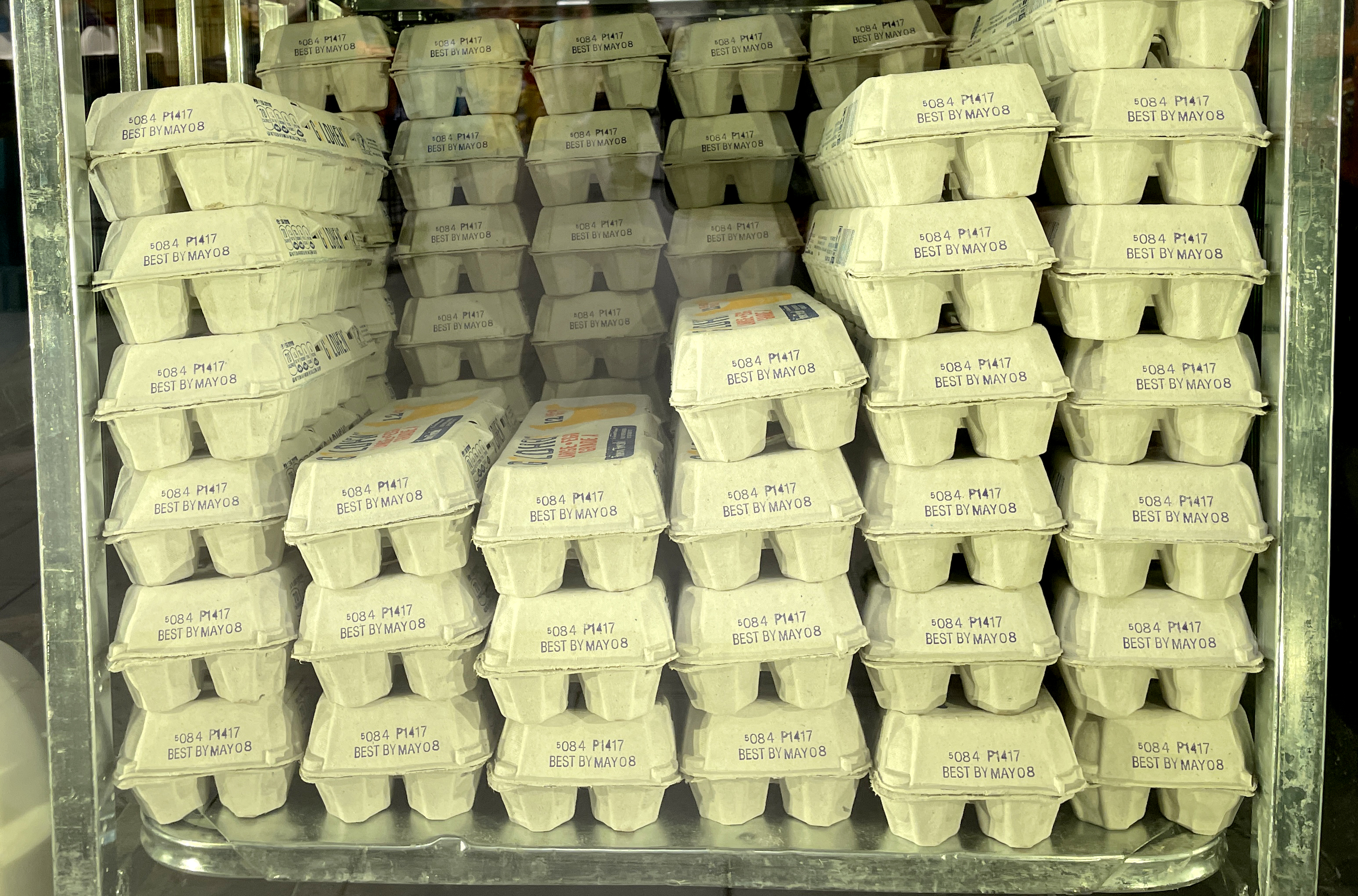Fact Check: Trump's False Claims on Gas & Egg Costs!
Fact Check: Did Trump Really Get Gas & Egg Prices Right?
Introduction: Separating Fact from Fiction in Trump's Price Claims
Ever feel like you're living in a funhouse mirror, where everything's a little distorted? That's how it can feel when trying to navigate the news these days. Recently, President Donald Trump made some pretty bold claims about the prices of everyday essentials like gas and eggs. He assured Americans that prices were plummeting, even bragging about egg prices being down an unbelievable 93-94% since he took office. Sounds amazing, right? But are these claims cracking under the pressure of reality? Let's dive in and unscramble the truth. We’re here to crack the case and see if his numbers hold up!
Trump's Claims: A Closer Look at the Numbers
In Oval Office remarks on April 22, Trump confidently stated, "Prices are going down, not going up." He even pointed to gasoline at $1.98 a gallon in a couple of states, a price point many hadn't seen in years. As for eggs, he claimed their cost had plummeted by a staggering 93-94% since his administration began. These are eye-catching numbers, painting a rosy picture of affordability. But is it a portrait of truth, or a heavily filtered snapshot?
Decoding the Gas Price Claim
So, did gasoline prices really dip below $2 a gallon in some states? Well, while certain areas might have seen lower prices temporarily, the reality is a bit more nuanced. According to the most recent data available, the national average for gasoline prices tells a different story.
Examining the Egg Price Plunge
And what about the supposed 93-94% drop in egg prices? That's a claim that definitely raises an eyebrow. Did we miss some kind of incredible egg revolution? Keep reading to find out!
The Reality Check: What the Data Says
Let's consult the experts – the data crunchers and number-analyzers – to see if Trump's claims match up with reality. According to the latest data, average retail egg prices were actually trending upwards, not downwards. And while gas prices may have dipped in certain areas, the national average remained significantly higher than the $1.98 Trump mentioned.
Egg Prices: Up, Not Down
Contrary to Trump’s assertion, average retail egg prices paid by consumers were... wait for it... up! As of March, the most recent data available, the price of eggs was higher than it was before his administration. Not quite the 93-94% drop he described, is it?
Gas Prices: Nowhere Near $1.98
And what about that $1.98 gas price? As of the time of Trump's statement, no states had seen gas prices dip that low. The national average was significantly higher, hovering around $3.11 a gallon. Think of it like this: claiming gas prices are universally low because of a few discounted stations is like saying everyone in a city is rich because there are a few millionaires living there. It's just not accurate.
Why the Discrepancy? Possible Explanations
So, why the disconnect between Trump's claims and the actual data? There could be several reasons. Perhaps he was referring to specific, localized instances that don't reflect the national average. Or, perhaps there was a misinterpretation of the data. Whatever the reason, it's crucial to rely on accurate, verifiable information when discussing economic realities.
Cherry-Picking Data: The Art of Misleading Statistics
Sometimes, data can be used like a magic trick. By selecting specific data points that support a particular narrative, it's possible to create a misleading impression. This is known as "cherry-picking" data, and it's a common tactic in political discourse.
The Perils of Misinformation: Why Accuracy Matters
In an era of information overload, it's more important than ever to be discerning consumers of news. Misinformation can have serious consequences, shaping public opinion and influencing important decisions. That’s why fact-checking is so crucial!
The Impact of Global Events: Factors Influencing Prices
It's important to remember that prices for goods like gas and eggs are influenced by a complex web of global events. Factors such as supply and demand, geopolitical tensions, and even weather patterns can all play a role in determining the cost of these everyday essentials.
Geopolitical Tensions and Gas Prices
For example, conflicts in oil-producing regions can disrupt supply chains, leading to higher gas prices. Similarly, severe weather events can impact agricultural production, affecting the price of eggs and other food items.
Supply and Demand: The Basic Economics
Ultimately, the law of supply and demand reigns supreme. When demand for a product is high and supply is low, prices tend to rise. Conversely, when supply exceeds demand, prices tend to fall. It’s Economics 101!
Beyond the Numbers: The Human Cost
While we're dissecting the data, it's important to remember that these numbers represent more than just statistics. They reflect the real-world experiences of individuals and families struggling to make ends meet. Rising prices for essential goods can put a strain on household budgets, forcing people to make difficult choices.
The Real-World Impact on Families
Imagine a family on a tight budget, struggling to afford groceries and gas. When prices for these essential items rise, it can have a significant impact on their quality of life. Every penny counts, especially during tough times.
The Importance of Economic Accuracy
That's why it's so important to have accurate information about economic conditions. When leaders make misleading statements about prices, it can undermine public trust and create a false sense of security.
Fact-Checking in the Age of Misinformation
In today's digital age, misinformation can spread like wildfire. It's up to each of us to be vigilant consumers of news, verifying information before sharing it and relying on credible sources. Fact-checking websites and independent journalists play a vital role in holding leaders accountable and ensuring that the public has access to accurate information. Let's all do our part to fight the spread of misinformation!
The Power of Independent Journalism
Independent journalism acts as a watchdog, scrutinizing claims made by public figures and providing unbiased analysis. It's a crucial pillar of a healthy democracy, ensuring that power is held accountable and that the public is informed. Support independent journalism and help keep the truth alive!
Conclusion: Unscrambling the Truth About Prices
So, what's the takeaway from all of this? While Trump may have painted a rosy picture of plummeting gas and egg prices, the data tells a different story. Average retail egg prices were actually up, not down, and gas prices remained significantly higher than the $1.98 he mentioned. It's a reminder that it's crucial to rely on accurate, verifiable information when assessing economic realities. And in a world filled with misinformation, critical thinking and a healthy dose of skepticism are more important than ever. Don't just swallow everything you hear – do your own research and demand the truth!
Frequently Asked Questions (FAQs)
Here are some frequently asked questions about gas and egg prices, and the factors that influence them:
- Q: What are the main factors that influence gas prices?
A: Gas prices are affected by a combination of factors, including crude oil prices, refining costs, distribution costs, taxes, and supply and demand dynamics. Geopolitical events and seasonal demand also play a significant role.
- Q: Why do egg prices fluctuate so much?
A: Egg prices can fluctuate due to factors like seasonal demand (e.g., around Easter), outbreaks of avian flu, feed costs, and changes in consumer demand.
- Q: How can I find reliable information about current gas and egg prices?
A: Reputable sources for tracking gas prices include the U.S. Energy Information Administration (EIA) and AAA. For egg prices, check reports from the U.S. Department of Agriculture (USDA) and market analysis firms.
- Q: What can consumers do to save money on gas?
A: Consumers can save money on gas by practicing fuel-efficient driving habits, maintaining their vehicle properly, shopping around for the best prices, and considering alternative transportation options.
- Q: How do government policies impact the price of gas and eggs?
A: Government policies, such as taxes, subsidies, and regulations, can influence the price of gas and eggs. Trade agreements and environmental regulations can also have an impact on supply and demand, and ultimately, prices.

